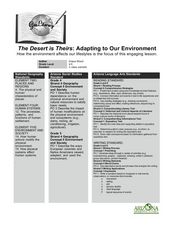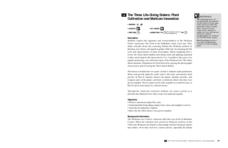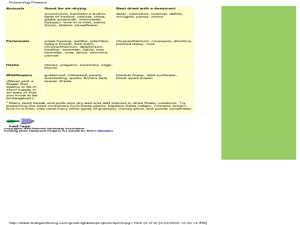Curated OER
The African and the Pequot in Colonial America
Students determine that the lands the English settled on were owned and inhabited by 70,000 Indians. They consider that the London Company sold land charters to the English, which gave them illegal title to lndian land and that the...
Curated OER
Bison on the Plains
Fifth graders explore U.S. geography by reading assigned text about American Indians. In this migration lesson, 5th graders identify the differences between Native Americans and European settlers who traveled through middle America in...
Curated OER
Community Conservation
Eighth graders identify plants and animals native and foreign to colonial North America and examine and evaluate the environmental impact of European exploration and colonization. They then relate the environmental impact of Colonization...
Scholastic
Groundhog Day
A simple activity for a simple, but special, holiday. Young learners read a brief history of Groundhog Day, practice reading aloud, and then discuss how shadows are formed.
Curated OER
Reaching Across Borders In Southern Africa
Learners gain a greater understanding of how political borders impact human and environmental development. Then, either individually or as a class, establish a correspondence with a Peace Corps volunteer working in Africa.
Curated OER
Spread of Disease
Seventh graders discover facts about the human body. In this diseases lesson plan, 7th graders understand different kinds of diseases, how disease spreads, how diseases have changed and preventative medicines. Students debate...
Curated OER
The Desert is Theirs: Adapting to Our Environment
Students determine how animals and people adapt to the desert environment. In this desert lesson, students review vocabulary about the desert and how humans have to make changes to accommodate their environments. They listen to and...
Berkshire Museum
The Three Life-Giving Sisters: Plant Cultivation and Mohican Innovation
Children gain first-hand experience with Native American agriculture while investigating the life cycle of plants with this engaging experiment. Focusing on what the natives called the Three Sisters - corn, beans, and squash - young...
Curated OER
Preserving Buds and Blooms
Learners learn how to preserve flower buds and blooms. In this gardening lesson, students explore the methods of air drying, using drying agents, and pressing plants to preserve them.
Curated OER
The Disappearing Honeybees: Tracking Honeybee Decline
Students practice graphing and other math skills to track number of honeybee colonies present in United States since 1978, discuss major crops that are dependent on insect pollinators, and examine reasons for decline of United States...
Curated OER
Reading Comprehension Worksheet: Volcano
In this reading comprehension worksheet, learners read a short passage on volcanoes erupting and then answer 4 reading comprehension questions.
Curated OER
Day 5 - Science Plants - germination - growth- What plants do we need to survive?
Students look at the crops of the settlers. In this crop lesson, students discuss why each crop was important to the settlers and how they used it. They plant seeds and track and observe the growth.
Curated OER
Corn in Legend and Myth
Seventh graders compare myths and legends about corn and use creative abilities to act them out. In this corn legends activity, 7th graders read background information about corn and its importance. Students work in groups to research...
The History Cat
The History Cat: Geography: People: Amerindians of the Amazon
Discusses the plight of the Amerindians who made the Amazon rainforest their home. Many died from diseases brought by European colonists and many others continue to lose their lands to greedy companies or farmers.
Museums Victoria
Museum Victoria
Museum Victoria is Australia's largest public museum organization and is responsible for the care of the state's collections and conducting research.














